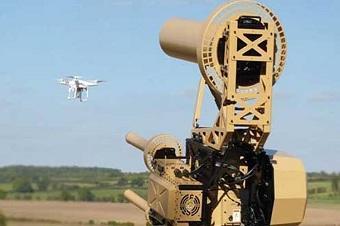New research anticipates that the anti-drone market will reach USD 10.5 billion by 2030, registering an estimated CAGR of 28.3% from 2022 to 2030. According to the new report from Grand View Research, the use of drones is getting more normal which increases the risk of security and privacy. These threats are faced by both civilians and military personnel as drones can be remotely operated and even unauthorised unmanned vehicles.
The ease of access of small-sized drones into sensitive and often high security areas has caused a significant increase in the market investment for the anti-drone equipment, say the researchers.
The sale of remote-controlled drones is legal based on location; however there are many strict no-fly zones which the common public is unaware of. However, the threat for spy-attacks and other type of attacks is higher for the regular public, military and government.
The anti-drone market helps governments identify, locate, and destroy illegal drones either via software or direct launches. Government institutions, private enterprises, and military forces are the major clients of the anti-drone market. This market is also responsible for assisting the government in various public safety operations.
The anti-drone market uses a combination of modern technology and hardware in their product offerings. For instance, in October 2021, U.S. Homeland Security struck a deal with Drone Shield Ltd., and purchased drones with on the move attack technology from them. It has also been observed that the military also invest a large amount of money in the research and development of anti-drone systems making them a significant part of the anti-drone market.
The North American region generated the largest market share for the anti-drone market in 2021 as a direct result of the heavy investment in military and defence. It has been observed that multiple start-ups are providing custom and out of the box solutions in the anti-drone market.
The report makes several key observations as highlighted here:
• Due to the commercialisation of drones, there has been an increase in small sized drones which are being used for illegal and/or terrorist activities
• The military and defence segments are investing heavily in the anti-drone market to counter the threat from unmanned aerial vehicles and other drone attacks
• Advancements in technologies in the anti-drone market allows users to bring down suspicious drones in one piece for further investigation and identification
• The anti-drone market in the Asia Pacific region is predicted to experience considerable growth as countries in that region are spending heavily on defence and military operations along with expansion.








